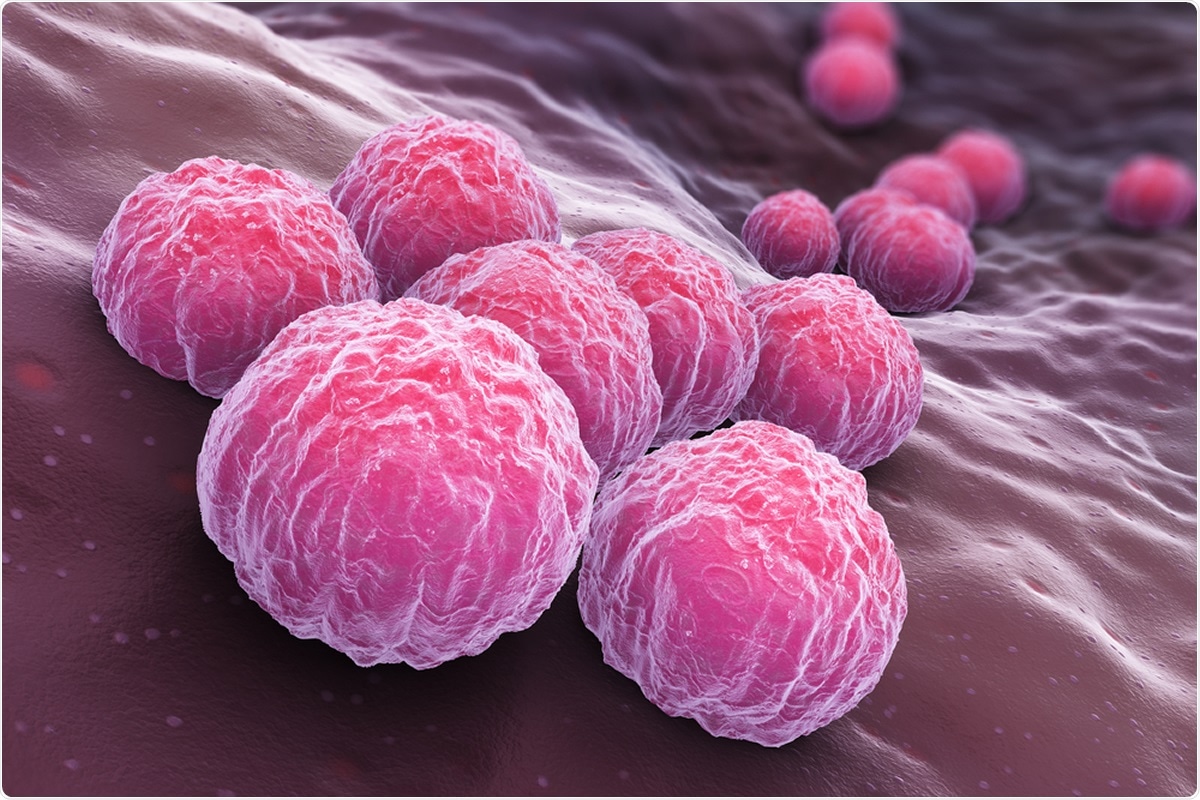Researchers from the University of California, San Francisco, USA, University of Oxford, University of Surrey, United Kingdom, in collaboration with the Department of Control of Neglected Tropical Diseases, World Health Organization (WHO) and International Trachoma Initiative, The Task Force for Global Health, have worked on a study looking at the effects of the current COVID-19 pandemic on elimination efforts against trachoma globally.
Their study titled, “Implications of the COVID-19 pandemic on eliminating trachoma as a public health problem," was released as a preprint research paper on the medRxiv* server.
Trachoma
According to the Centre for Disease Prevention Control (CDC) and the World Health Organization (WHO), trachoma remains one of the major causes of preventable blindness caused by an infection. It is caused by the bacterium Chlamydia trachomatis and spreads rapidly via contact. If not treated early, adequately, and appropriately, this infection can lead to scarring of the inside of the eyelids and also damage the cornea, leading to blindness (trichiasis).

Trachoma is most prevalent in regions of the world that have limited access to clean water and sanitation. Around 8 million people worldwide are blinded by trachoma, and a further 500 million are at risk of blindness due to trachoma in 57 countries around the world, says the CDC. Countries in sub-Saharan Africa are, particularly at risk. The WHO had targeted trachoma with an elimination program by the end of 2020. Their approach is named SAFE.
- “Surgery to correct the advanced, blinding stage of the disease (trichiasis)."
- “Antibiotics to treat active infection."
- “Facial cleanliness."
- “Environmental improvements in the areas of water and sanitation to reduce disease transmission."
Trachoma control
The WHO says the transmission of this infection cannot be monitored directly. But the presence of the infection and its effects need to be monitored. This is undertaken by assessing the prevalence of trachomatous inflammation—follicular (TF) among children aged between 1 and 9 years. The WHO says that if TF's prevalence is less than 5 percent in each of the districts where the disease was endemic earlier, good control can be assumed.
One of the major ways of trachoma control is the yearly mass drug administration (MDA) of azithromycin to populations living in districts where the infection is endemic.
Current status
There has been substantial work towards the elimination of trachoma as a public health problem. However, the COVID-19 pandemic has caused hurdles to the progress towards its complete elimination. With the pandemic, there is a delay in MDA. Thus active cases of trachoma have resurfaced in some regions.
Definitions and study design
Two parameters measured were basic reproduction number, R0 of the bacteria, and treatment-associated reproduction number, RT of the bacteria. R0 is defined as the average number of secondary infections each infection causes in the absence of MDA or immunity of close contacts. RT is the average number of new infections caused by each case in a district that is receiving yearly MDA.
The team of researchers classified the regions/districts based on rates of trachoma transmission as:
- Subcritical (R0 < 1) – Control assured even without MDA
- MDA-subcritical (R0 > 1, but RT < 1) – Control of trachoma due to MDA
- Supercritical (R0 and RT are greater than one) – Not expected to achieve control despite ongoing annual MDA.
The team used a mathematical model of trachoma transmission to check how the pandemic has affected the MDA efforts and thus delays the progress made towards trachoma control and elimination.
Overall results of the study showed
- The delay in control efforts of trachoma is less in subcritical districts with the pandemic
- In MDA-subcritical districts, the control delay is longer than the program delay, but when annual MDA with azithromycin is resumed, the control is expected to be as before. These districts may also need an additional catch-up MDA to put it on its initial track to eliminate trachoma. Control delay could thus be reduced to close to zero, wrote the researchers.
- In supercritical districts, a delay in the program followed by a resumption of the regular MDA would put it back to its previous state but not lead to a control of the disease, wrote the researchers.
- The authors wrote, "Our model predicts that a program can get back on track if multiple MDA cycles are missed, provided that extra MDA cycles can be provided in subsequent years." These extra treatment sessions could be one, three, or even six months after the scheduled annual MDA, they wrote.
- The team explains, "In most districts, a year of COVID-related delay can be mitigated by a single extra round of mass drug administration." More strategies are needed for supercritical districts, however.
Conclusions and implications
Authors wrote in conclusion that if the pandemic continues, efforts must be raised to provide more community-wide and community-specific control strategies to eliminate trachoma. They explain that if appropriate steps are taken, the global efforts to eliminate trachoma could be realized.
"In MDA-subcritical districts, control after a one-year program delay can be achieved by either extending the duration of annual MDA distribution or by providing an additional catch-up round of MDA. Meanwhile, supercritical districts will require adjunctive treatments in order to reach control milestones." Due to the pandemic trachoma prevention strategies need to be reassessed and revised."
*Important Notice
medRxiv publishes preliminary scientific reports that are not peer-reviewed and, therefore, should not be regarded as conclusive, guide clinical practice/health-related behavior, or treated as established information.
- Implications of the COVID-19 pandemic on eliminating trachoma as a public health problem Seth Blumberg, Anna Borlase, Joaquin M Prada, Anthony W Solomon, Paul Emerson, Pamela J Hooper, Michael S Deiner, Benjamin Amoah, Deirdre Hollingsworth, Travis C Porco, Thomas M Lietman medRxiv 2020.10.26.20219691; doi: https://doi.org/10.1101/2020.10.26.20219691, https://www.medrxiv.org/content/10.1101/2020.10.26.20219691v1
https://news.google.com/__i/rss/rd/articles/CBMiZWh0dHBzOi8vd3d3Lm5ld3MtbWVkaWNhbC5uZXQvbmV3cy8yMDIwMTEwMi9GaWdodC1hZ2FpbnN0LXRyYWNob21hLWRpc3J1cHRlZC1ieS1DT1ZJRC0xOS1wYW5kZW1pYy5hc3B40gFpaHR0cHM6Ly93d3cubmV3cy1tZWRpY2FsLm5ldC9hbXAvbmV3cy8yMDIwMTEwMi9GaWdodC1hZ2FpbnN0LXRyYWNob21hLWRpc3J1cHRlZC1ieS1DT1ZJRC0xOS1wYW5kZW1pYy5hc3B4?oc=5
2020-11-03 01:56:00Z
CAIiEOy8rJH3V4wBv5lcc-DMu2AqMwgEKioIACIQZdRflS9INK7zM5FkBi3R3CoUCAoiEGXUX5UvSDSu8zORZAYt0dwwr47MBg
Bagikan Berita Ini














0 Response to "Fight against trachoma disrupted by COVID-19 pandemic - News-Medical.Net"
Post a Comment